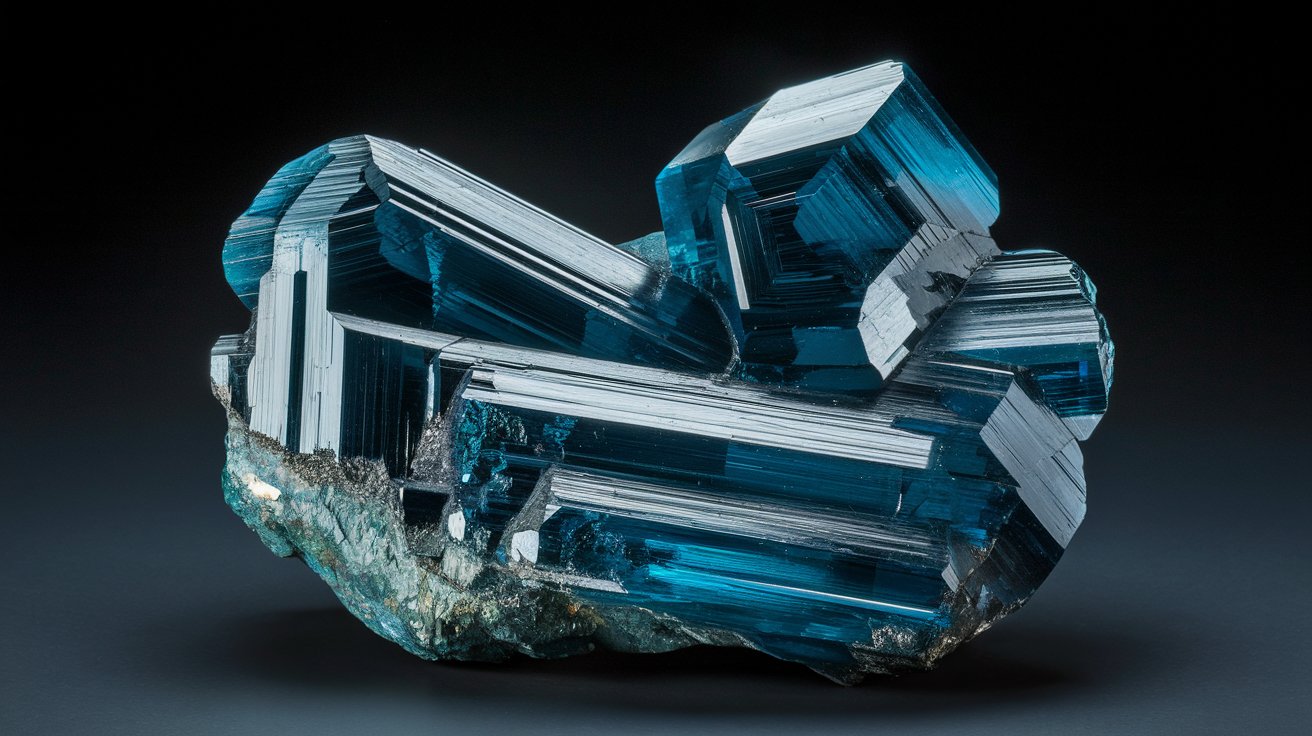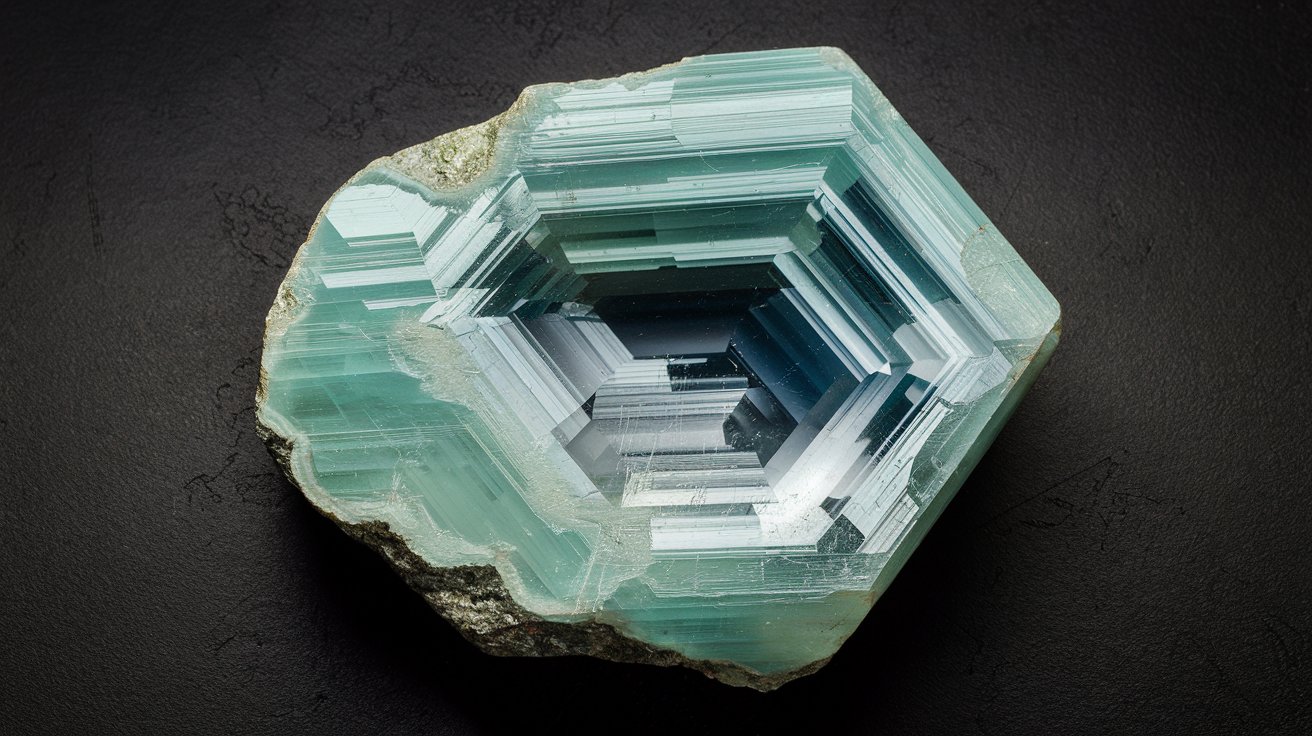
What makes Althupite so special? Althupite, a rare mineral discovered in the 1980s, has captivated scientists and collectors alike. Named after its key elements—Aluminum (Al), Thorium (Th), Uranium (U), and Phosphorus (P)—this mineral boasts a complex chemical formula: AlTh(UO2)7(PO4)4(OH)5·15H2O. Found primarily in granitic pegmatites, Althupite's unique crystal structure and physical properties, such as its yellowish-brown color and vitreous luster, make it a standout. Its rarity and association with valuable elements like thorium and uranium add to its allure. Dive into these 25 facts to uncover why Althupite is a gem in the world of mineralogy.
Key Takeaways:
- Althupite is a rare and fascinating mineral with a complex composition, found in granitic pegmatites. Its unique properties make it valuable for scientific research and educational purposes.
- The study of Althupite provides insights into geological processes, environmental significance, and potential scientific applications. Its rarity and cultural significance make it a subject of ongoing research and fascination.
What is Althupite?
Althupite is a rare mineral that has intrigued scientists and collectors alike. Its unique composition and properties make it a subject of ongoing research and fascination.
-
Discovery and Naming
Althupite was first discovered in the 1980s by Paul Piret and Michel Deliens. The name comes from its main elements: Aluminum (Al), Thorium (Th), Uranium (U), and Phosphorus (P). -
Chemical Composition
The chemical formula for Althupite is AlTh(UO2)7(PO4)4(OH)5·15H2O. This complex formula shows the presence of aluminum, thorium, uranyl ions, phosphate groups, hydroxide ions, and water molecules. -
IMA Symbol
Althupite is assigned the IMA symbol Ahp, representing Aluminum-Thorium-Uranium Phosphate.
Where is Althupite Found?
Althupite's rarity makes its discovery locations particularly interesting. Its occurrence is typically linked to specific geological settings.
-
Type Locality
The type locality of Althupite is a granitic pegmatite, a type of igneous rock formed during the final stages of a magma chamber's cooling process. -
Occurrence
Althupite is rare and found in limited quantities. It is usually associated with granitic pegmatites, which are rich in rare earth elements and other minerals.
What are the Physical and Optical Properties of Althupite?
Understanding the physical and optical properties of Althupite helps in identifying and studying this mineral.
-
Crystal Structure
The crystal structure of Althupite is complex, involving a combination of tetrahedral and octahedral coordination. It features a three-dimensional framework of phosphate and uranyl groups linked by aluminum and thorium ions. -
Physical Properties
Althupite has a yellowish-brown color and a vitreous luster. It is relatively soft, with a Mohs hardness of around 4-5, and a specific gravity of approximately 4.5 g/cm³. -
Optical Properties
Under optical examination, Althupite shows biaxial negative properties. It has a refractive index of about 1.8 and a birefringence of around 0.02.
How is Althupite Analyzed?
Various methods are used to analyze and confirm the presence of Althupite, each providing different insights into its properties.
-
X-ray Diffraction
X-ray diffraction (XRD) analysis is crucial for confirming Althupite. The XRD pattern shows distinct peaks corresponding to the mineral's unique crystal structure. -
Thermal Stability
Althupite is relatively stable at room temperature but may undergo dehydration when heated. This property is important for understanding its behavior during geological processes and in laboratory settings. -
Hydration
The mineral contains 15 water molecules per formula unit, contributing to its hydration properties. These water molecules are essential for maintaining the mineral's stability and structure.
Why is Althupite Environmentally Significant?
Althupite's occurrence and composition provide valuable insights into environmental and geological processes.
-
Environmental Significance
Althupite's presence in granitic pegmatites indicates its association with rare earth elements and other valuable minerals, making it important for understanding geochemical processes. -
Mineralogical Classification
Althupite belongs to the phosphate mineral group, which includes minerals containing the tetrahedrally coordinated phosphate anion (PO43−). -
Rare Earth Elements
The presence of thorium and uranium in Althupite makes it significant in the context of rare earth elements, crucial for various industrial applications.
What is the Geological Context of Althupite?
The geological context of Althupite provides insights into its formation and the conditions under which it crystallizes.
- Geological Context
Althupite is typically found in granitic pegmatites, formed during the final stages of magma chamber cooling. This context provides insights into the formation processes of these pegmatites.
How is Althupite Studied and Collected?
Research and collection of Althupite involve various scientific and practical approaches.
-
Mineralogical Research
Research on Althupite has focused on its crystal structure, chemical composition, and physical properties, contributing significantly to our understanding of phosphate minerals. -
Collectibility
Due to its rarity and unique composition, Althupite is highly sought after by mineral collectors. Its distinctive appearance and complex formula make it a prized addition to any collection. -
Educational Value
Althupite serves as an excellent teaching tool in mineralogy and geology classes, ideal for discussing mineral formation, crystal structures, and geological processes.
What are the Scientific Applications of Althupite?
Althupite's properties make it valuable for various scientific applications, particularly in fields like nuclear energy and environmental science.
-
Scientific Applications
The study of Althupite has practical applications in fields like nuclear energy and environmental science, crucial for managing radioactive waste and predicting environmental impacts. -
Conservation Efforts
Given its rarity, Althupite is subject to conservation efforts aimed at preserving its occurrence in natural settings, including protecting granitic pegmatites from mining activities.
What is the Cultural Significance of Althupite?
Althupite's unique composition and rarity have made it a subject of interest in cultural and historical contexts.
-
Cultural Significance
The mineral's discovery and naming reflect the contributions of scientists like Paul Piret and Michel Deliens to the field of mineralogy. -
Documentation
Documentation of Althupite is essential for maintaining accurate records of its discovery and occurrence, including detailed descriptions of its properties and geological context.
What Does the Future Hold for Althupite Research?
Ongoing research continues to explore Althupite's properties and potential applications, contributing to our understanding of geological processes.
-
Collaborative Research
The discovery and study of Althupite have involved collaborative efforts between scientists from various disciplines, leading to a deeper understanding of the mineral. -
Future Research Directions
Future studies may focus on Althupite's behavior under different environmental conditions, its potential uses in industrial applications, and its role in understanding geological processes. -
Conclusion
Althupite is a fascinating mineral that offers insights into the complex world of phosphate minerals. Its unique composition, rare occurrence, and significant properties make it an important subject for scientific research and educational purposes.
Althupite: A Rare Gem in Mineralogy
Althupite stands out as a rare and intriguing mineral. Discovered in the 1980s by Paul Piret and Michel Deliens, it's named for its key elements: Aluminum, Thorium, Uranium, and Phosphorus. With a complex chemical formula, Althupite is typically found in granitic pegmatites. Its yellowish-brown color, vitreous luster, and unique crystal structure make it a collector's dream. The mineral's association with rare earth elements like thorium and uranium highlights its significance in industrial applications, especially in nuclear energy. Althupite's rarity and distinctive properties also make it a valuable subject for scientific research and education. Conservation efforts are crucial to preserve its natural occurrences. As research continues, Althupite will undoubtedly provide further insights into geological processes and mineral formation. This mineral truly embodies the intricate beauty and complexity of our planet's geological treasures.
Frequently Asked Questions
Was this page helpful?
Our commitment to delivering trustworthy and engaging content is at the heart of what we do. Each fact on our site is contributed by real users like you, bringing a wealth of diverse insights and information. To ensure the highest standards of accuracy and reliability, our dedicated editors meticulously review each submission. This process guarantees that the facts we share are not only fascinating but also credible. Trust in our commitment to quality and authenticity as you explore and learn with us.


